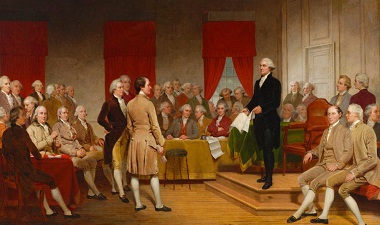The U.S. Supreme Court’s unanimous decision in a straight, white woman’s job bias case is noteworthy for a number of reasons, not just because of the unusual nature of a “reverse” discrimination claim.
 On June 5, 2025, the Justices ruled that Marlean Ames, an Ohio state employee, could move forward with her claim that she was denied a promotion and was demoted because of her sexual orientation. The promotion went to a LGBTQ+ person and after the demotion, Ames' job went to another LGBTQ+ person.
On June 5, 2025, the Justices ruled that Marlean Ames, an Ohio state employee, could move forward with her claim that she was denied a promotion and was demoted because of her sexual orientation. The promotion went to a LGBTQ+ person and after the demotion, Ames' job went to another LGBTQ+ person.
The Supreme Court, in an opinion by Justice Ketanji Brown Jackson, rejected a lower appellate court ruling that Title VII, the nation’s major job bias law, required Ames, as a member of a majority group (straight, white) to show more proof initially than members of minority groups. That heightened standard was known as the “background circumstances” rule.
Title VII prohibits employers from intentionally discriminating against their employees because of race, color, religion, sex or national origin. In a very straightforward analysis, Jackson wrote that the judge-made background circumstances rule was inconsistent with Title VII’s text and Supreme Court precedents. The text of Title VII, wrote Jackson, focuses on individuals, not groups, making no distinctions between majority-group plaintiffs and minority-group plaintiffs.
Here are four takeaways from the Justices’ ruling:
First, Chief Justice John Roberts Jr. assigned the court’s opinion to Jackson. Handing one of the term’s higher profile cases to the court’s junior justice was a plum assignment for her and a sign of trust by Roberts. It also was a strategic assignment by Roberts. Justice Jackson, a member of a minority group, led the court in a discrimination case involving a member of a majority group. It gave the final decision an extra dollop of credibility.
Second, in analyzing the text of Title VII and precedents, Jackson twice relied on the court’s 2020 decision in Bostock v. Clayton County, which held that Title VII “works to protect individuals of both sexes from discrimination, and does so equally.” Bostock was a 6-3 decision in which the court ruled that job discrimination against transgender and gay individuals was prohibited sex discrimination. Bostock was a highly controversial case. By relying twice on that decision in her opinion, Jackson and the unanimous court put the precedent on firm ground. None of the justices who dissented in Bostock (Samuel Alito, Clarence Thomas, Brett Kavanaugh) noted in Jackson’s opinion their continuing disagreement with Bostock
Third, will the Bostock decision play a role in the Supreme Court’s pending case involving Tennessee’s ban on gender affirming care for transgender minors? The Tennessee case, United States v. Skrmetti, is not a Title VII challenge. It is a challenge under the Equal Protection Clause of the 14th Amendment. The claim is that the ban discriminates based on sex or transgender status. Justice Neil Gorsuch wrote the majority opinion in Bostock, and he was unusually silent in the Tennessee arguments. We may learn what he was thinking when the Skrmetti decision is issued.
Finally, Justice Thomas continues his role as chief bomb thrower. As he often does, he uses his concurrences or dissents to flag a court doctrine or precedent that he contends was wrong. In the Title VII case, Thomas flagged the justices’ 1973 decision in McDonnell Douglas Corp. v. Green. That case set out a three-step framework for courts to use in evaluating a claim based on circumstantial—not direct—evidence of discrimination. The McDonnell Douglas framework, wrote Thomas in his concurrence, is a judge-made rule that has no basis in the text of Title VII and is confusing to apply.
The Supreme Court will issue more decisions on June 12 at 10 a.m.
Marcia Coyle is a regular contributor to Constitution Daily. She was the Supreme Court Correspondent for The National Law Journal and PBS NewsHour who has covered the Supreme Court for more than three decades.






